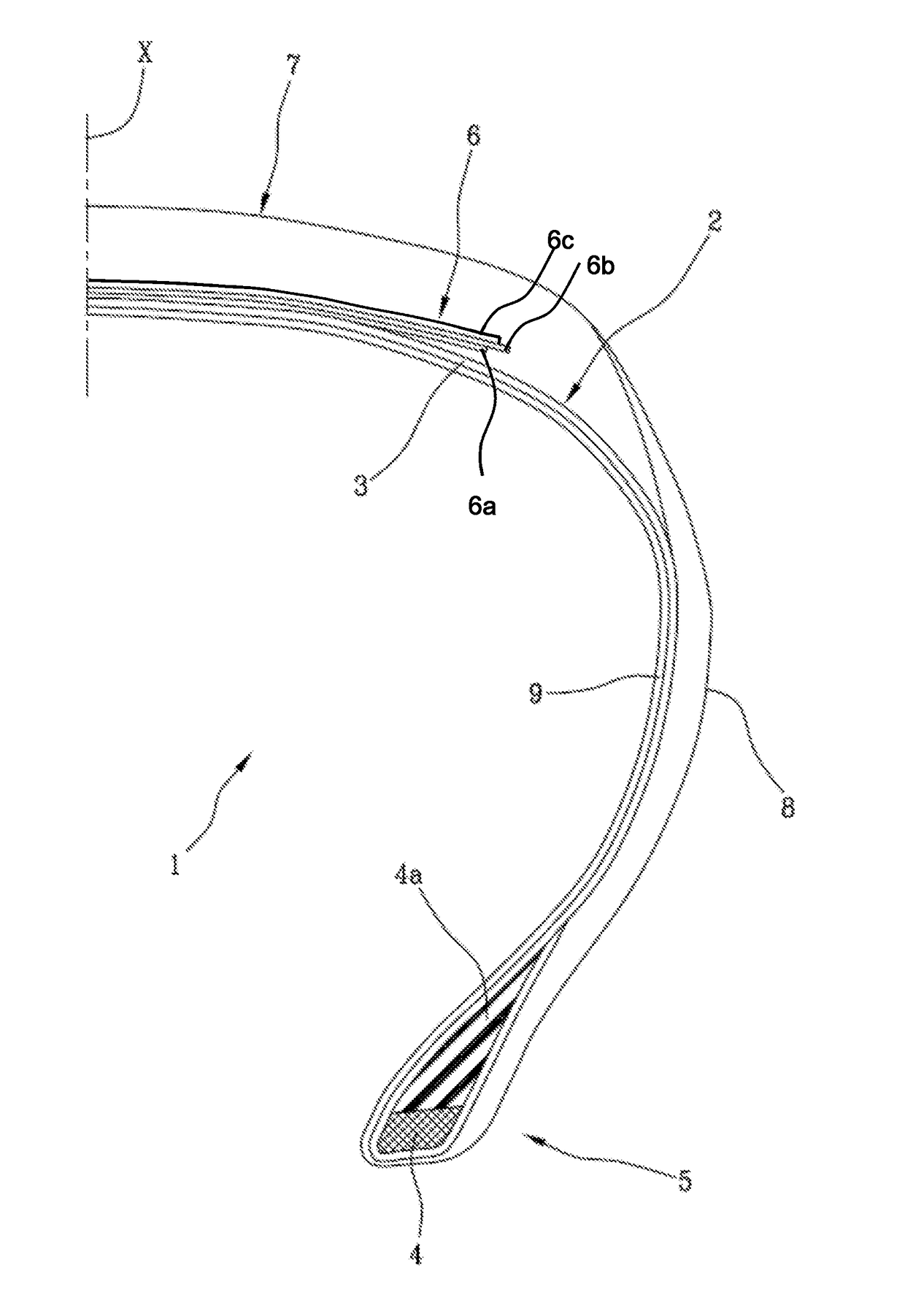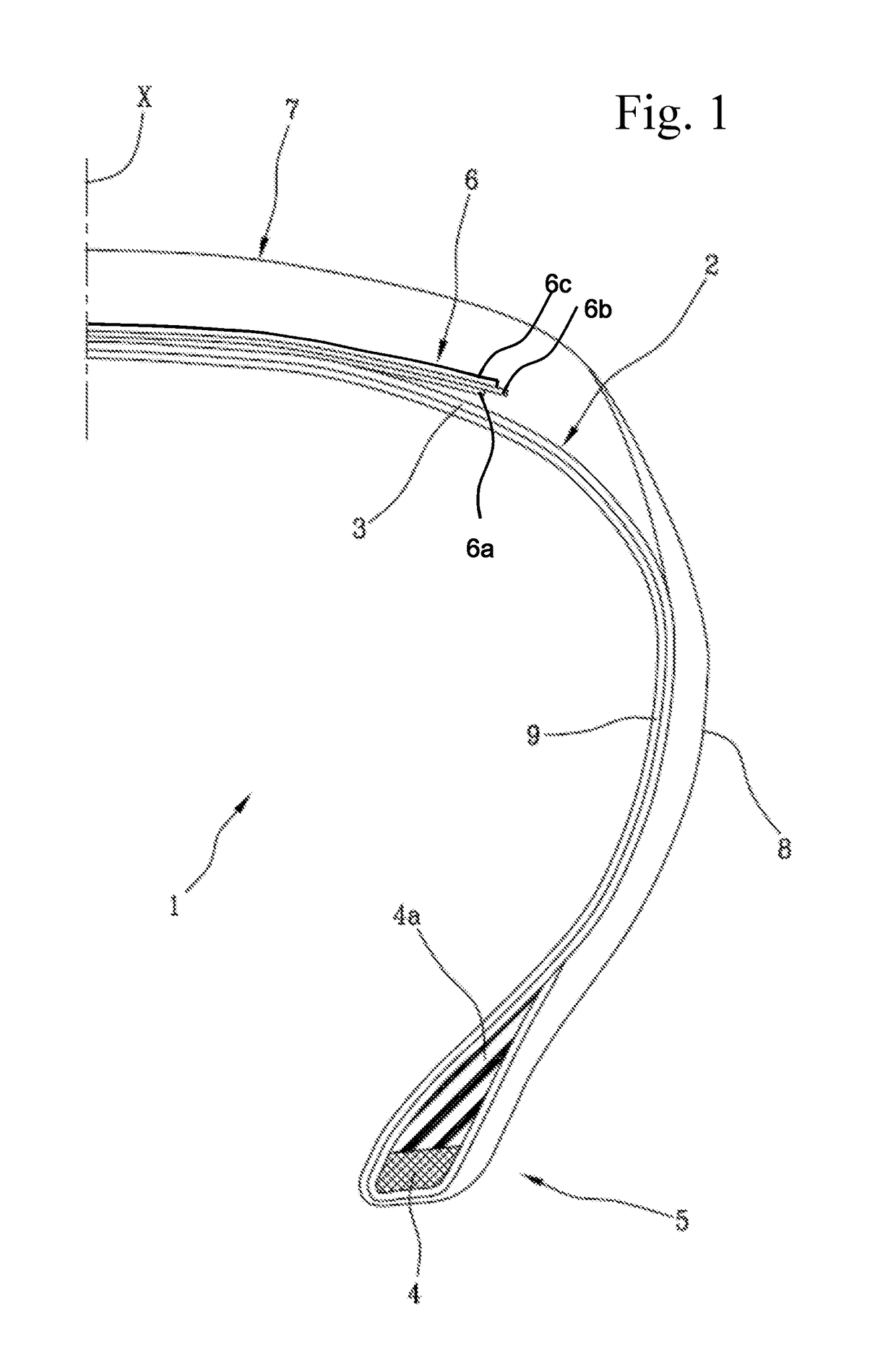High performance tyre
a high-performance, tyre technology, applied in the direction of special tyres, tyre parts, transportation and packaging, etc., can solve the problems of weak treads and negative impact on grip, and achieve the effect of high catalytic activity and high polymer yield
- Summary
- Abstract
- Description
- Claims
- Application Information
AI Technical Summary
Benefits of technology
Problems solved by technology
Method used
Image
Examples
example 1
of Iso-Styrene / Trans-Butadiene Copolymer of Molecular Weight 538,000 with 40% by Weight of Styrene (Polymer SBR-3)
[0108]Styrene (109 g; 1.04 mol), butadiene (170 g; 3.3 mol; 4.6 M solution in toluene) and MAO (0.1 mol; 103 ml; 10 wt % solution in toluene) were placed in a 3000 ml round-bottomed flask equipped with a magnetic stirrer, under an inert atmosphere.
[0109]After bringing the solution to the reaction temperature (T=0° C.), polymerization was started by adding the catalyst of formula 1 described previously (0.102 g; 155 μmol), dissolved in 20 ml of toluene. The mixture was left stirring at 0° C. for 24 hours and at 25° C. for a further 24 hours, 500 ml of toluene being added.
[0110]The polymerization was stopped by pouring the contents of the flask into ethanol acidified with HCl and 2,6-di-tert-butyl-4-methylphenol (BHT) as antioxidant.
[0111]The coagulated polymer was washed with ethanol, filtered and dried in a vacuum oven at 30-40° C.
[0112]The yield was 93%. The resulting p...
example 2
of Iso-Styrene / Trans-Butadiene of Molecular Weight 117,000 with 42% by Weight of Styrene (Polymer SBR-2)
[0113]Styrene, butadiene, MAO and the catalyst of formula 2 described below dissolved in 10 ml of toluene were placed in a 2000 ml round-bottomed flask equipped with a magnetic stirrer, under an inert atmosphere, via a procedure similar to that described previously. The reaction mixture was left stirring at room temperature for 24 hours. The reaction was terminated by pouring the contents of the flask into ethanol acidified with HCl and BHT as antioxidant. After washing with fresh ethanol, the polymer was recovered by filtration and dried in a vacuum oven at 40° C. for about 3 days.
[0114]The yield was 92%. The resulting polymer had a molecular weight of about 117,000 Dalton with a polydispersity index equal to about 1.7 and a Tg of about −39° C.
example 3
on of the Elastomeric Compositions
[0115]The elastomeric compositions R1, R2 and 11 illustrated in Table 1 below were prepared, respectively, by using the branched styrene-butadiene polymer HP 755 from JSR (polymer SBR-1) composed of 39% by weight of styrene and 61% by weight of butadiene, supplemented with 37.5 phr of TDAE oil, obtained by an ionic synthesis in solution having molecular weights (Mw) of about 1,000 kDa with a polydispersity index of about 1.67 and a glass transition temperature measured by DSC (10° C. / min) of about −31° C. and of about −21° C. for the pure polymer (after extraction of the TDAE oil), and the polymers SBR-2 and SBR-3 having the characteristics described above.
[0116]Composition R1, used as first reference, contains as solid polymer only the polymer SBR-1, which, being a polymer obtained by anionic synthesis, has no stereoregularity in the spatial arrangement of the butadiene and styrene monomers. In particular, in the chain of the polymer SBR-1, the arr...
PUM
| Property | Measurement | Unit |
|---|---|---|
| Temperature | aaaaa | aaaaa |
| Temperature | aaaaa | aaaaa |
| Fraction | aaaaa | aaaaa |
Abstract
Description
Claims
Application Information
 Login to View More
Login to View More - R&D
- Intellectual Property
- Life Sciences
- Materials
- Tech Scout
- Unparalleled Data Quality
- Higher Quality Content
- 60% Fewer Hallucinations
Browse by: Latest US Patents, China's latest patents, Technical Efficacy Thesaurus, Application Domain, Technology Topic, Popular Technical Reports.
© 2025 PatSnap. All rights reserved.Legal|Privacy policy|Modern Slavery Act Transparency Statement|Sitemap|About US| Contact US: help@patsnap.com



